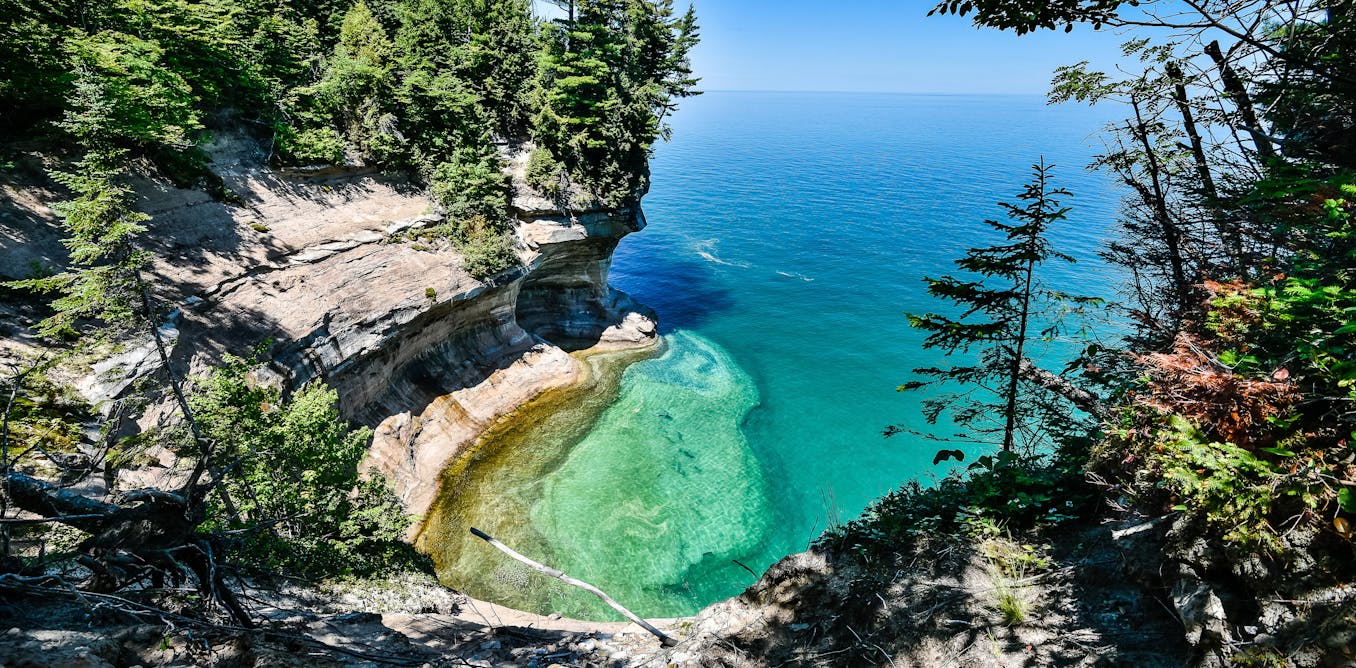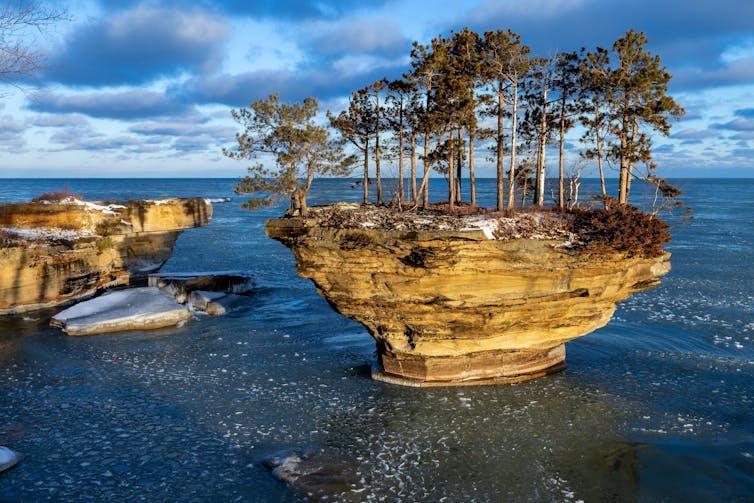
Underwater lake heatwaves are on the rise, threatening aquatic life
Subsurface heatwaves are becoming more frequent, longer-lasting and more intense.
yesterday • 6 min • Source
Lakes are essential to ecosystems, providing freshwater, supporting biodiversity and offering crucial habitat for fish and other aquatic species.
But a recent study by my colleagues and I shows that lakes around the world are warming, not just at the surface, but deep below as well. Subsurface heatwaves in lakes, defined as extreme periods of high water temperature below the surface, are increasing in frequency, duration and intensity.
These hidden extremes could have serious consequences for lake ecosystems. Despite that, the issue remains largely unmonitored and poorly understood.
Lake heatwaves are similar to those in the atmosphere or ocean. They are prolonged periods of excessive warmth. Most research to date has focused on surface temperatures, where climate change has already caused more frequent and intense heatwaves over recent decades.
Get your news from actual experts, straight to your inbox. Sign up to our daily newsletter to receive all The Conversation UK’s latest coverage of news and research, from politics and business to the arts and sciences.
These surface events can disrupt the chemical and physical balance of lakes, damage food webs and, in some cases, cause mass fish die-offs .
Aquatic species respond to surface heatwaves in different ways. Some benefit if the warming expands their preferred temperature range. But many others, particularly those already living near their thermal limits, face significant stress.
In lakes that stratify during summer – where warm surface water sits above a cooler bottom layer – some species seek refuge from the heat by migrating to deeper water. But what happens when that deeper refuge is no longer cool?
A closer look beneath the surface
To investigate, we analysed temperature data from tens of thousands of lakes worldwide. These included one-dimensional lake models, high-resolution simulations for the Great Lakes of North America, and local models calibrated to specific lake conditions.
By analysing how temperature varies with depth and time, we identified when and where subsurface waters crossed extreme heat thresholds.
We defined subsurface heatwaves as periods when temperatures at particular depths exceeded their typical seasonal range. We also tracked how these events have changed since 1980, and how they might evolve under different emissions scenarios by the end of this century.

Subsurface heatwaves are already common and they’re becoming more so.
Since 1980, bottom heatwaves (those occurring at the deepest parts of lakes) have increased by an average of more than seven days per decade in frequency, more than two days per decade in duration and they have risen by around 0.2C per decade.
Although these deep-water events tend to be slightly less intense than surface ones, they often last longer.
We also found a rise in “vertically compounding” heatwaves. This is when extreme temperatures happen simultaneously at the surface and bottom of a lake.
These doubled-up events are now happening more than three days per decade more frequently. When they strike, aquatic species can be left with no place to escape the heat.
Even more concerning, the deep-water refuges that once offered shelter during surface heatwaves are shrinking or disappearing altogether. In some lakes, the distance fish need to travel to find cooler water has increased by nearly a metre per decade.
Our simulations suggest that these trends will intensify, especially under high-emission scenarios. By the end of this century, some bottom heatwaves could last for months, with temperature extremes not seen in the historical record.
Why this matters
Lake ecosystems rely on thermal structure. When extreme heat reaches deeper into the water column, it can trigger cascading ecological effects, from shifting fish habitats and altering species distribution, to increased nutrient cycling and algal blooms. It could even affect the release of greenhouse gases like methane from lake bed sediments.
Subsurface heatwaves pose a particular risk to bottom-dwelling species, which may be less mobile or already adapted to cold, stable conditions. The loss of thermal refuges during surface heatwaves also jeopardises species that would otherwise escape to deeper waters.
By ignoring what’s happening below the surface, we risk underestimating the true ecological effects of climate change on freshwater systems.
Our study highlights the urgent need to expand lake monitoring efforts to include subsurface temperatures. While satellites have transformed our understanding of surface warming, they can’t capture what’s happening below.
Future research should examine how different species respond to these deep-water and vertically compounding heatwaves. It should explore how changes in lake thermal structure affect different processes like nutrient cycling and methane production.
For conservation planners, that means incorporating subsurface heatwaves into risk assessments and habitat models. For climate modellers, it means better representing vertical processes in lakes within global Earth system models.
As lakes continue to warm, managing and understanding these hidden heat extremes will be critical to protecting biodiversity and the vital ecosystem services lakes provide.
Iestyn Woolway receives funding from UKRI NERC.


